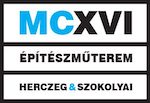| Location | Kiskőrös |
| Investor | Ministry of Construction and Transport |
| Floor area | 10 315 m2 |
| General designer | MCXVI Architects |
| Leading architect designer | Herczeg László, Gábor Szokolyai |
| Architect designers | Czirják Bence, Kálna Dávid, Hegymegi Julia, Stahl Nóra, Suri Sára |
| landscape architecture | 4d landscape architecture office |
| work of fine art | Miklós János Boros |
| Status | Open Architectural Competition |
| Award | Honorable Mention |
| Project year | 2024 |
Our goal is to continue the built history of the city center through the thoughtful replacement of architectural and environmental elements, enhancing quality and sustainability while respecting and minimizing the disruption of the community’s established intellectual network.
The city relies on the Petőfi cult as a resource. However, its spatial representation is currently contradictory in many places. Nevertheless, there is an essential and valuable legacy of the Petőfi tradition that is not manifested in the physical environment but in the cohesive power of the community’s intellectual network. Children in Kiskőrös encounter the city-shaping identity associated with Petőfi from an early age. This fosters their interest in poetry, literature, and culture, enriching their knowledge. It is no coincidence that the city operates a living library and a cultural center.
With our design, we attempted to rehabilitate some fundamental principles from the old urban fabric, establishing a usable and accessible main square alongside a new library building that articulates it. The decision regarding the cultural center’s designated site was easier to make, as it involved demolishing the former party headquarters. The party headquarters was in a dilapidated state, offering neither architectural value nor intellectual heritage worthy of preservation.
The architectural design evokes the built and landscape elements of the Great Hungarian Plain (Alföld, Rónaság) as a cultural landscape. The buildings maintain a small-town scale and height. In line with environmentally conscious thinking, the structural framework is made of wood, CLT, and BSH elements. The facades and roofs feature ceramic cladding, a material with strong local traditions. Large portals establish a strong visual connection with their immediate surroundings. The cornices align with the lines of neighboring buildings. The interiors are characterized by raw wooden structures and surfaces—more traditionally expressed in the library, while in the cultural center, they serve as pure space-defining elements.
Work of fine art – Miklós János Boros
DIMENSION SHIFT / PETŐFI 2024
plane – space – time
The essence of poetry is that it exists in a timeless dimension. A poetic image becomes present the moment it is received. The image of my sculptures, appearing in real space and real time, is also present. A constant present, a “timeless time,” that is, the gnomic present.
Sándor Petőfi’s “landscapes,” through his poetry, have become permanent images in the minds of all who have ever encountered them. The Alföld, Freedom, and the countless metaphors of a human mindset that is one with nature—all are living images that become visible each time we read or recall his writings.
How can we step in or out of the space of visual art? What paths or tools can lead to the sculptural embodiment of a thought? Perhaps this is not far from poetic thinking itself. In these sculptures, the plane as “material” comes into focus. The viewer moves along the boundary between two and three dimensions. From plane into space; and with the involvement of the dimension of time, from the momentary into the permanent.
The plain, the flatlands, the landscape of the Alföld may, through Petőfi’s lines, become plastically perceptible and truly experiential for everyone. With a small sculptural twist, my aim is that—in the spirit of Petőfi—the plane, the plains, give not only a metaphorical but also a literal sculptural experience, imbued with the delicate lyricism I myself have learned from Petőfi. My goal was to create a balance of landscape, distance, infinite perspective, and the minute details discoverable within it—seeking a form that is contemporary yet uses traditional techniques. Just as Sándor Petőfi, in his time as a contemporary poet, captured what was essential.
Both sculptures aim to evoke a fundamental, distant Alföld experience—the sense of an endless space where, despite the few points of reference, we can still locate ourselves. The outdoor sculpture has a horizontal orientation, while the indoor one is vertical. What unites them is that they achieve the sense of space through relief-like, low plasticity, in which the strong silhouettes of an open composition play a defining role. My intention is to create a simple, clear spatial experience of the Alföld’s vast distances—one that, for a moment, may evoke a sense of permanence in the viewer.
Material: bronze cast using the lost-wax technique, with an internal frame of stainless steel.
Approximate dimensions: outdoor piece: 230 × 450 × 50 cm; indoor piece: 130 × 220 × 30 cm.

 Magyar
Magyar
